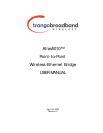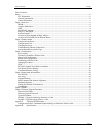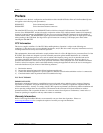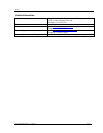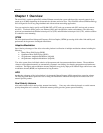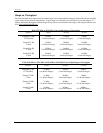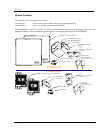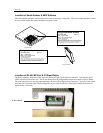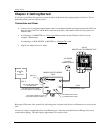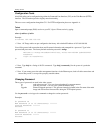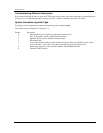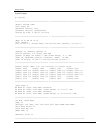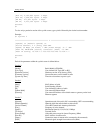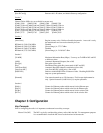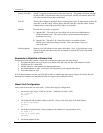
Overview
Trango Broadband Wireless — Atlas5010 page 6
Chapter 1 Overview
The Atlas5010 is a point-to-point (PtP) wireless Ethernet transmission system which provides network connectivity at
speeds up to 45 Mbps depending on the transmission distance and noise floor. The Atlas5010 utilizes OFDM technology
and is designed for use in long range backhaul and wide area data networking applications.
Users are required to simply specify one P5010M (INT or EXT) unit type as master unit (MU) and one unit as remote
unit (RU). Each unit utilizes power-over-Ethernet (PoE) and is designed for outdoor environments. The cable entry
point can accommodate both Shielded twisted pair Cat5 (STP) and unshielded twisted pair Cat5 (UTP), with the addition
of conduit for tower mounting.
OFDM
The Atlas platform utilizes Orthogonal Frequency Division Duplex (OFDM) processing which offers link stability and
performance in the presence of multipath interference.
Adaptive Modulation
One of the key advantages of the Atlas series radio platform is utilization of multiple modulation schemes including the
following:
• Binary Phase Shift Keying (BPSK)
• Quadrature Phase Shift Keying (QPSK)
• 16 Quadrature Amplitude Modulation (16QAM)
• 64 Quadrature Amplitude Modulation (64QAM)
The Atlas system allows individual selection of the upstream and downstream modulation schemes. The modulation
schemes can be adjusted manually or automatically (automatic rate shifting) for changing propagation and interference
conditions. The higher order modulation schemes (64QAM) are typically deployed at reduced ranges while lower order
modulation schemes (BPSK) are implemented at long distances.
ARQ
Another key advantage of the Atlas platform is its Automatic Repeat Request (ARQ) transmission correction scheme.
The ARQ algorithm detects packet loss due to fading and interference conditions and requests the remote radio to re-
transmit specific packets.
Dual Polarity Antenna
Atlas radios feature built-in dual polarity antenna functionality. Users may select either horizontal or vertical antenna
polarity through the unit’s software. Switchable antenna polarity provides greater spectral flexibility.



